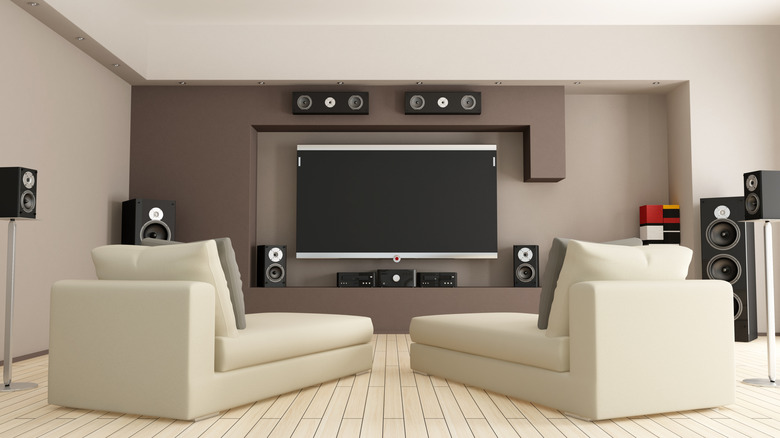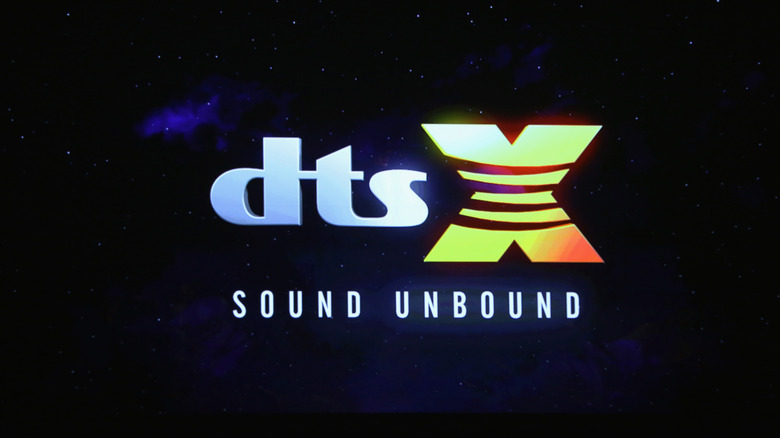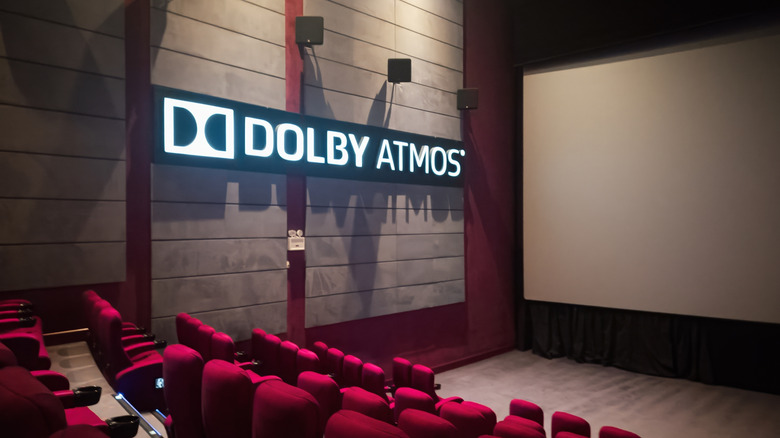DTS:X Vs Dolby Atmos: How The Two Top Surround Sound Formats Compare
DTS:X and Dolby Atmos are two major leaps forward in surround sound technology, but where do those leaps put them in relation to each other? Both are object-based audio formats that move beyond traditional channel-based surround sound systems. Both do so for the same reason: to create more realistic, more enveloping sound that can be placed anywhere in a three-dimensional space. However, the two take pretty different paths to get there.
Dolby Atmos first debuted in 2012, immediately making a splash with its introduction of overhead sound. See, whereas traditional 5.1 or 7.1 systems create true surround sound on a horizontal plane, Atmos adds height channels to create a three-dimensional "dome" of audio. DTS:X, launched in 2015, takes a slightly different approach. Like Atmos, it gives sound designers more control over the placement and movement of individual audio elements. However, DTS:X doesn't use extra overhead speakers. It can map audio to whatever speaker setup you already have, whether that's a basic 5.1 configuration or something more advanced.
Widespread adoption of Dolby Atmos vs. DTS:X
One of Dolby Atmos's greatest advantages over DTS:X and other competing formats is its widespread use across the entertainment industry. Not only is it installed in thousands of multiplexes worldwide, but it's also supported on a wide range of home theater hardware: AV receivers, TVs, soundbars, game consoles, and even mobile devices. Many streaming platforms (including Netflix, Disney+, and Apple TV+) offer Atmos support, and premium Blu-ray releases almost always carry Atmos tracks as well. You can even find Dolby Atmos Music on Apple Music and Tidal.
Comparatively, DTS:X has much less support. It's popular among AV receiver manufacturers such as Denon, Marantz, Yamaha, and Sony, and many Blu-ray releases also feature DTS:X soundtracks alongside Atmos, but it's not nearly as widespread as Dolby's offering. Streaming services have been especially slow to embrace DTS:X — platforms like Netflix and Amazon Prime Video don't even offer it at this time. This definitely limits its exposure, but it hasn't stopped DTS:X from growing. (For instance, it partnered with IMAX back in 2018 to deliver "IMAX Enhanced" home releases using a specialized variant of DTS:X.)
Which of the two top surround sound formats is better?
The question of whether DTS:X or Dolby Atmos is "better" depends on how you look at it (or, rather, listen to it). Dolby Atmos definitely benefits from the way easier to find. You're bound to come across compatible movies, shows, and music no matter where you look. That said, its unique speaker setup is something of a positive and a negative. It's what creates that "bubble of sound" effect for a true Atmos experience... But upgrading your sound system to get the most out of Atmos is still an added expense.
DTS:X, on the other hand, scores points for flexibility. It doesn't need a special or specific speaker layout because it adapts to whatever system you already own. It also lets listeners adjust dialogue levels independently, which can be a big plus during action-heavy movies. And because DTS encodes at higher bit-rates than Dolby, it can (in theory) give you more detailed sound. It's the same reason wired headphones sound better than Bluetooth. Of course, whether that difference is even noticeable will depend on your room, your hardware, your setup, and your ears.
The good news? Regardless of what format your next Blu-ray or streaming title gives you, you'll be getting treated to audio that's more lifelike, more dynamic, and more enveloping than traditional surround sound ever had to offer.


